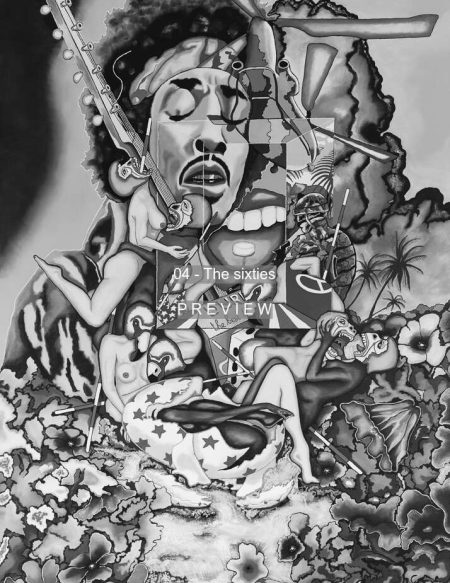Description
This is a concept drawing first formed in 1973 and turned into an oil painting in 2016. It has been created on linen with an aluminum stretcher and housed in a black baking list. The size of the painting is 140 x 100 cm and has been finished with a matt varnish.
The hippie culture among young people started in the second half of the 1960s and lasted until the early 1970s. As a youth culture and counterculture, this subculture was popular among teens and those twenties, and these ‘hippies’ were seen as the founders of the flower power movement and were therefore associated with the sexual, musical, and social revolutions of the time.
The Woodstock Festival in 1969 was a pinnacle of the hippie era. Hippies resisted lovelessness, war, discrimination, and violence, and this was a time of many anti-atomic war demonstrations. The ‘Vietnam’ debacle also led to a countermovement and protests on an unprecedented scale, especially among young people.
A clear peace movement grew and continued to gain a huge number of supporters. “Make love, not war” was the slogan of the flower power, giving birth to a counterculture immersed in the ideals of nonviolence, struggle for civil rights, feminism, and freer sexual morals converged. The contraceptive pill had been on the market as early as 1960, and the image of free love arose as part of the sexual revolution, in which sexuality was seen as fine and good, disconnected from human reproduction and no longer as part of a social framework of monogamy.
The Civil Rights Act of 1964 was a milestone in US legislation that outlawed major forms of discrimination against African Americans and women. This law put an end to unequal voter registration requirements and racial segregation in schools, work, and public services. The centuries-old image of black people as a sexually uninhibited species had come to an end. Or should this have been the image of white and black people together.
Gerrit Swaan


















